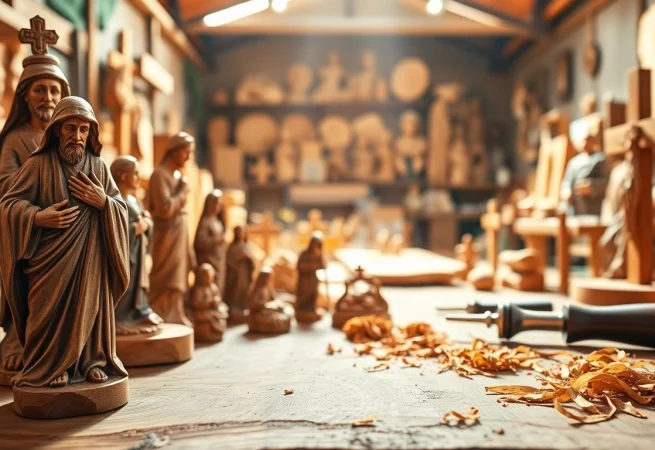

Leveraging Competitive Intelligence to Enhance Business Strategy and Performance
Understanding Competitive Intelligence
In a world of relentless competition and swiftly changing market dynamics, understanding the landscape of your business environment is crucial. This is where competitive intelligence comes into play. It enables organizations to gather, analyze, and disseminate important information that not only helps them understand their industry but also positions them strategically for future growth. To appreciate its significance fully, one must delve into the definition, importance, historical context, and common misconceptions surrounding this essential practice.
Definition and Importance of Competitive Intelligence
Competitive intelligence (CI) is defined as the systematic process of gathering, analyzing, and interpreting information regarding competitors, market trends, and overall industry dynamics. Unlike corporate espionage, which is unethical and illegal, CI adheres to legal and ethical standards, focusing on publicly available information and industry insights.
The importance of competitive intelligence lies in its ability to provide organizations with a strategic edge. By understanding competitors’ strengths and weaknesses, businesses can make informed decisions regarding product development, marketing strategies, and overall business operations.
Moreover, CI enhances an organization’s ability to anticipate market changes, react proactively to competitors, and identify emerging opportunities and threats. This foresightedness can lead to improved profitability, market share retention, and overall organizational stability.
Historical Context and Evolution of Competitive Intelligence
While competitive intelligence may seem like a modern business practice, its roots can be traced back to ancient times. Historically, merchants and traders have always sought knowledge about their competitors to gain an advantage. However, the formal practice of competitive intelligence began to develop in the United States during the 1960s and 1970s. Organizations recognized the need to systematically collect and analyze data about their competitors in a growing market economy.
As globalization began to take shape in the late 20th century, CI practices evolved significantly. The advent of digital technology transformed how data was collected, analyzed, and disseminated, making CI more accessible and crucial than ever. Today, companies utilize advanced software and analytical techniques to compile vast amounts of data, turning them into actionable insights.
Common Misconceptions About Competitive Intelligence
Despite its growing importance, several misconceptions surrounding competitive intelligence persist. One prevalent myth is that CI is primarily about spying on competitors. In reality, CI focuses on acquiring legal and ethical insights through market analysis, customer feedback, and public information.
Another misconception is that CI is only relevant for large corporations. On the contrary, businesses of all sizes can benefit from CI strategies tailored to their specific context and needs. Additionally, some believe that CI is solely about tracking competitors; however, it also encompasses understanding customer preferences, market trends, and regulatory environments that can influence business strategies.
Collecting Competitive Intelligence Data
Primary Sources of Data in Competitive Intelligence
Effective competitive intelligence relies on diverse sources of data. These sources can be categorized into primary and secondary data. Primary data involves collecting information directly from the source, such as interviews, surveys, and focus groups. This type of data can provide a firsthand perspective on customer sentiments and competitor strategies.
Secondary data consists of information that has already been collected and published by others. Common secondary sources include industry reports, market research studies, competitor websites, press releases, and social media channels. By triangulating both primary and secondary sources, organizations can create a comprehensive view of the competitive landscape.
Tools and Techniques for Gathering Insights
Numerous tools and techniques can aid organizations in gathering competitive intelligence. Online survey tools, such as SurveyMonkey and Google Forms, can help obtain primary data from customers regarding their experiences and preferences. Web scraping tools can efficiently gather competitive insights from websites, newsletters, and press releases.
Moreover, platforms like SimilarWeb and SEMrush provide a wealth of information on competitor website traffic, keywords, and audience demographics. Social listening tools such as Hootsuite can track brand mentions across social media, offering insights into public perceptions and sentiments.
Finally, business intelligence software enables organizations to consolidate and analyze data, facilitating the transformation of raw data into strategic insights.
Best Practices for Data Collection in Competitive Intelligence
To ensure effective data collection, several best practices should be adhered to. First, organizations need to establish clear objectives for their CI efforts. Defining what insights are necessary and how they will be used is crucial for guiding the data collection process.
Second, a systematic approach to data collection should be adopted. This means creating a structured process for gathering, analyzing, and presenting data, which can enhance consistency and reliability.
Furthermore, ensuring ethical standards throughout the data collection process is paramount. Respect for competitor privacy, as well as adherence to legal guidelines, fosters credibility and trust in competitive intelligence efforts.
Lastly, organizations should continually evaluate and update their data collection methods. As market dynamics change, so too should the tools and approaches utilized to gather intelligence.
Analyzing Competitive Intelligence Information
Methods of Analyzing Competitive Intelligence Data
The analysis of competitive intelligence data is where the transformation of raw information into actionable insights occurs. Several methods can be employed to analyze CI data effectively. SWOT analysis (Strengths, Weaknesses, Opportunities, Threats) is a popular framework that helps organizations evaluate their position relative to competitors.
Another method is trend analysis, which focuses on identifying patterns over time. By examining historical data, organizations can discern emerging trends and anticipate future changes in the market landscape. Data visualization tools, such as Tableau or Google Data Studio, can aid in presenting complex data in digestible formats for better stakeholder understanding.
Identifying Trends and Insights
The ultimate goal of analyzing competitive intelligence data is to identify trends that can guide strategic decision-making. For instance, shifts in consumer behavior can be discerned through analyzing customer feedback and competitor marketing efforts. Identifying these trends early allows organizations to adapt their offerings and strategies swiftly.
Additionally, monitoring competitors’ product launches, pricing strategies, and promotional campaigns can uncover insights into their positioning and tactics. This information can be instrumental in crafting more effective marketing and business strategies that resonate with target audiences.
Turning Data into Actionable Business Strategies
Data analysis must culminate in the creation of actionable strategies that propel the business forward. Organizations should ensure that insights derived from competitive intelligence inform various aspects of their operational processes, including product development, marketing strategies, customer engagement, and pricing frameworks.
Moreover, collaboration among various departments—such as marketing, sales, and product development—can enhance the effectiveness of strategic initiatives informed by competitive intelligence. By aligning these departments around CI insights, organizations can execute more coherent and cohesive strategies.
Implementing Competitive Intelligence in Your Organization
Steps to Develop a Competitive Intelligence Program
Establishing a competitive intelligence program involves several critical steps. Firstly, organizations must define their goals and objectives accurately. This includes understanding the specific insights required to improve decision-making processes. Next, a CI team should be formed, comprising members from different functions within the organization to bring diverse perspectives and expertise.
The development of a structured plan for data collection and analysis should follow. This plan should outline the tools, workflows, and timelines for gathering and interpreting intelligence.
Implementing a feedback loop is also essential. This enables the continual refinement of CI processes based on lessons learned and changing market conditions.
Integrating Competitive Intelligence into Business Processes
For a competitive intelligence program to succeed, it must be integrated into the organization’s broader business processes. This means embedding CI insights into regular decision-making frameworks at all levels of the organization. Regular presentations and updates can keep stakeholders informed of competitive insights and their strategic implications.
Additionally, creating a culture that values data-driven decision-making can enhance the impact of CI efforts. Encouraging team members to leverage competitive intelligence in their roles leads to more innovative solutions and strategies.
Measuring the Success of Competitive Intelligence Initiatives
Measuring the success of competitive intelligence initiatives is vital to understanding their effectiveness. Organizations can employ key performance indicators (KPIs) such as the accuracy of forecasts based on CI, the number of strategic decisions enhanced by CI insights, and the overall impact on market share and profitability.
Regularly reviewing these metrics allows organizations to assess the value generated from their competitive intelligence efforts and make necessary adjustments to optimize their strategies.
Future Trends in Competitive Intelligence
Emerging Technologies Impacting Competitive Intelligence
The future of competitive intelligence is heavily influenced by emerging technologies. As artificial intelligence (AI) and machine learning continue to advance, they hold the potential to revolutionize data collection and analysis processes. These technologies can automate the extraction of insights from vast volumes of data, enabling organizations to derive insights more efficiently and effectively.
Moreover, predictive analytics is becoming increasingly relevant in competitive intelligence. By leveraging historical data and identifying patterns, organizations can forecast competitive movements and market shifts, enabling proactive rather than reactive strategies.
The Role of AI and Machine Learning in Competitive Intelligence
AI and machine learning algorithms are poised to play a critical role in enhancing the accuracy and speed of competitive intelligence processes. For instance, natural language processing can analyze consumer sentiment across social media channels more efficiently, identifying key trends and insights from unstructured data.
Additionally, predictive models can assist organizations in not just reacting to competitors but anticipating their behaviors, allowing businesses to develop strategies that outmaneuver rivals before they can act. This proactive approach to competitive intelligence marks a significant shift from traditional methodologies.
Preparing for the Evolving Landscape of Competitive Intelligence
To remain competitive in the evolving landscape of competitive intelligence, organizations must adopt an adaptable mindset. This involves continually investing in CI tools and technologies, along with providing ongoing training for employees to enhance their analytical skills.
Furthermore, fostering a culture of innovation and agility can prepare organizations to pivot quickly in response to shifts in the competitive environment. Keeping abreast of industry trends and emerging technologies will ensure that competitive intelligence practices remain relevant and effective in the face of change.

Handcrafted Olive Wood Carvings: Celebrating Artistry from the Holy Land
Introduction to Olive Wood Carvings
Among the myriad forms of artistic expression, few resonate as deeply with both the cultural and spiritual heritage of a region as Olive wood carvings. This unique craft marries the beauty of nature with the intricacies of handwork, transforming humble pieces of wood into profound statements of faith, love, and artistry. Originating from regions steeped in history, especially the Holy Land, olive wood carvings embody the essence of local tradition and craftsmanship.
Origin and Cultural Significance
The practice of carving olive wood has its roots in the ancient Mediterranean civilizations, where the olive tree has long been revered not only for its fruit but also for its wood. In many communities, particularly in Palestine, the art of olive wood carving is passed down through generations. The olive tree is a symbol of peace and endurance, and its wood is considered sacred, making every carving a reflection of both artistic and spiritual dimensions.
In the Christian tradition, particularly, olive wood is significant; it is used to create numerous religious artifacts, including the popular nativity scenes and crosses. These items hold a particular significance for pilgrims and visitors seeking a tangible connection to their faith and heritage. This connection extends beyond mere souvenirs, serving as cherished heirlooms and reminders of the intricate cultures from which they hail. By owning an olive wood carving, one engages with the story of the land and its people, making each piece uniquely valuable.
The Craftsmanship Process
The journey from raw olive wood to beautifully carved artworks is a labor-intensive one, defined by traditional craftsmanship techniques. Artisans begin by selecting pieces of wood, often sourced from pruned olive trees which are vital for the health of the surrounding trees. This sustainable practice not only promotes agricultural balance but also ensures that the wood utilized is a byproduct rather than a primary resource, preserving the existence of olive groves for future generations.
Once the wood is collected, the carving process takes precedence. Skilled artisans use traditional tools—often simple chisels and knives—to shape the wood. The objective is to highlight the unique grain patterns and colors inherent in each piece, as the natural variations contribute to the aesthetic value of the final product. The intricate details require patience and a deep understanding of the wood’s properties, allowing for the creation of lifelike figures and complex scenes that tell stories and depict emotions.
Unique Characteristics of Olive Wood
One of the most distinguishing features of olive wood is its striking grain patterns, which can vary from light to dark hues, often with intricate swirls and knots that enhance the visual appeal of the finished piece. This uniqueness means that no two carvings are alike, endowing each item with its own personality.
Additionally, olive wood is reputed for its durability. The compact and dense nature of this wood provides a strong foundation, resulting in carvings that can stand the test of time, both in terms of physical longevity and in their appeal. Furthermore, the wood’s resistance to splintering makes it an ideal medium for professional artisans. This blend of beauty and resilience renders olive wood carvings not merely decorative items, but lasting symbols of artistic integrity and cultural significance.
Types of Olive Wood Carvings
Religious Figurines and Statues
Among the most cherished forms of olive wood carvings are religious figurines and statues. These pieces often depict figures from Christian tradition—angels, saints, and biblical personalities such as the Holy Family during the nativity scene. The craftsmanship involved in creating these figures is monumental, as artisans strive to capture the essence and emotion of each character.
These carvings often serve both decorative and functional purposes. Many families choose to place them in their homes as symbols of faith, while churches and religious institutions display them as part of their spiritual heritage. The act of hand-carving each statue allows artisans to imbue their work with a personal touch, often reflecting their faith and devotion through the artistry.
Decorative Crosses and Nativity Scenes
Notably, olive wood crosses are highly sought after, often appreciated for their symbolism within Christianity. They not only serve as decoration but also as reminders of faith, offering both aesthetic beauty and spiritual significance. Each cross can be intricately detailed or simply elegant, tailored to various tastes and preferences.
Another popular type is the nativity scene, vividly illustrating the birth of Jesus in a way that emphasizes the story’s significance. Artisans take great care in depicting every detail—from the figures of Mary and Joseph to the animals in the stable—creating a scene that resonates with viewers year after year. These comprehensive and finely crafted representations engage both children and adults, often becoming central pieces of holiday celebrations.
Custom and Bespoke Carvings
The beauty of olive wood carvings also lies in the ability to commission custom or bespoke pieces. Many artisans are skilled in personalizing works according to the specific requests of customers, whether that involves incorporating names, dates, or specific themes important to the client.
Custom carvings can create unique, sentimental gifts suitable for various occasions—weddings, anniversaries, or significant life events. By choosing a bespoke piece, clients not only obtain a one-of-a-kind artwork but also support local artisans and preserve the age-old craft of olive wood carving.
How to Choose Quality Olive Wood Carvings
Evaluating Craftsmanship and Detail
When selecting olive wood carvings, it’s essential to understand how to evaluate quality. Authentic craftsmanship is often characterized by attention to detail and finishing. A well-crafted carving will exhibit smooth and clean lines, a polished surface that highlights the wood’s natural beauty, and intricate details that enhance the overall appeal. Seen closely, the craftsmanship reflects the skill of the artisan, highlighting their patience and dedication.
Always examine the weight and feel of the carving. Quality olive wood is dense and feels solid. If a piece feels too light or artificial, it may have been mass-produced from inferior materials. Engage with local artisans when possible; their passion and knowledge add tremendous value to the purchase experience, allowing for deeper understanding and appreciation of the art form.
Understanding Sourcing and Authenticity
The origin of the olive wood affects not only the quality of the carvings but also their authenticity. Quality items are generally made from wood sourced from established olive forestry in the Holy Land, ensuring not just a connection to the culture but also the longevity of the product. When purchasing, look for confirmations regarding sourcing and, if possible, certifications of authenticity. This guarantees that you are obtaining a true work of art rather than a mere replica.
Care and Maintenance Tips
Maintaining olive wood carvings is straightforward but vital for preserving their beauty. Regular dusting is necessary, as accumulated dust can dull the finish. It is recommended to use a soft, dry cloth for this task. For deeper cleaning, a damp cloth followed by thorough drying can be employed, ensuring excess moisture does not penetrate the wood.
Over time, natural oils may diminish. To rejuvenate the wood, periodically treat it with mineral oil or a specially formulated wood conditioner, which can enhance the grain and restore its luster. Avoid placing olive wood items in direct sunlight or extreme temperatures, as these factors can damage the wood and affect the integrity of the carvings.
The Market for Olive Wood Carvings
Trends in Art and Collectibles
The market for olive wood carvings has seen a steady growth over the past years, driven by an increasing appreciation for artisanal crafts and sustainable products. Collectors and buyers are increasingly choosing handmade items, seeking pieces that reflect cultural stories and local craftsmanship. The global trends are shifting from mass-produced items to unique, meaningful works of art that make a statement about personal values and historical appreciation.
With the rise of online retail, olive wood carvings are becoming more accessible to international buyers who wish to own a piece of the Holy Land. This trend not only benefits consumers but also supports local artisans, preserving the traditions associated with olive wood carving.
Where to Buy Authentic Carvings
Purchasing olive wood carvings can be an adventure in itself. While many tourists find shops filled with carvings in Jerusalem, online marketplaces have expanded access to these treasured items far beyond geographical barriers. It is crucial to buy from reputable vendors who provide detailed descriptions and authenticity guarantees. Consider sourcing directly from artisans or authorized retailers who specialize in handmade items from the Holy Land. By doing so, consumers can support fair trade practices and maintain integrity within the market.
Supporting Local Artisans and Communities
Each olive wood carving purchase carries with it a sense of responsibility and support for local artisans and their communities. By choosing to invest in these handcrafted items, buyers contribute to the livelihood of artisans who rely on their craft for sustenance. This support helps sustain cultural heritage and encourages the preservation of traditional techniques that may otherwise be lost to modernity.
Furthermore, many artisans engage in communal initiatives, reinvesting in their communities through education and social programs. When buying olive wood carvings, consumers have the power to impact lives directly, fostering sustainable economic development in regions where such support is crucial.
The Future of Olive Wood Carvings
Innovations in Artistry
As artistry continues to evolve, so too does the craft of olive wood carving. Innovative techniques are emerging, combining traditional methods with modern sensibilities to create new forms and expressions within the medium. Artists are exploring aspects such as mixed media, incorporating other materials alongside wood, which opens new avenues for design and functionality.
Moreover, workshops and educational programs are being developed, passing on the skills of carving to new generations. This ensures the craft remains alive and relevant while encouraging young artisans to infuse contemporary ideas into their work, potentially attracting a broader audience interested in unique, modern takes on this ancient art form.
Sustainability and Ethical Practices
The future of olive wood carvings hinges significantly on sustainability and ethical practices. As awareness surrounding environmental issues grows, artisans are recognizing the importance of responsible sourcing and production methods. A shift toward sustainable practices allows the olive wood carving community to align its values with those of conscientious consumers.
Artisans are increasingly engaging in forestry practices that promote regeneration of olive groves while ensuring minimal impact on the ecosystem. Such approaches not only enhance the longevity of the craft but also help in preserving the natural habitat. By supporting artisans committed to these practices, consumers can take part in contributing to a greener future and sustainable living practices.
Expanding Global Interest
The global interest in olive wood carvings continues to expand, driven by cultural exchanges facilitated through travel and the internet. Awareness of this beautiful art form is rising among consumers worldwide, leading to increased demand for authentic and high-quality items. With the growing trends in home decor focusing on unique and heritage-rich elements, olive wood carvings are becoming ideal choices for those seeking to add character and warmth to their living spaces.
This surge in global interest presents opportunities for continued growth and development within the artisan community, allowing local craftsmen not only to thrive but to share their rich cultural narratives with a wider audience. Every carving tells a story, bridging gaps between cultures, history, and contemporary life, fostering deeper connections across diverse communities.

Quality Dump Trailer for Sale Near Me: Find Your Perfect Match
If you’re in the market for a dump trailer for sale near me, you’re not alone. Dump trailers have become an integral tool for various industries, from construction to landscaping, due to their ability to transport heavy loads efficiently. In this comprehensive guide, we will delve deep into the intricacies of dump trailers—exploring their various types, key features, applications, and how to find the right one for your needs.
Understanding Dump Trailers
What is a Dump Trailer?
A dump trailer is a versatile type of trailer designed for transporting loose materials such as gravel, sand, dirt, and debris. The fundamental feature that sets dump trailers apart from standard trailers is their ability to tilt. Using a hydraulic lift mechanism, they can raise the trailer bed to dump the contents, facilitating efficient unloading without requiring manual labor. This makes them particularly valuable in jobs that involve repetitive loading and unloading tasks.
Benefits of Using a Dump Trailer
The use of dump trailers comes with several advantages, including:
- Efficiency: A dump trailer allows for quick unloading of materials, which saves time and labor costs.
- Versatility: They can be used for various applications, making them suitable for contractors, landscapers, and homeowners alike.
- Increased Capacity: Most dump trailers can carry substantial weight, often ranging between 3,000 to 14,000 pounds, depending on the model.
- Enhanced Safety: By reducing the need for manual labor during unloading, dump trailers can help minimize workplace injuries.
Common Applications for Dump Trailers
Dump trailers are utilized in various sectors. Some common applications include:
- Construction: Ideal for transporting construction materials such as sand, gravel, or demolition debris.
- Landscaping: Used to haul soil, mulch, and plants for landscaping projects.
- Municipal Use: Often employed by municipalities for waste removal and road maintenance.
- Agriculture: Farmers can use dump trailers for transporting feed, fertilizers, and other bulk materials.
Types of Dump Trailers Available
Standard Dump Trailers
Standard dump trailers come in various sizes and configurations. Typically, they feature a single or tandem axle and can be manufactured from steel or aluminum. They are ideal for general hauling and are the most commonly used types in the industry.
Gooseneck Dump Trailers
These trailers feature a unique hitch design that connects to the bed of a pickup truck, providing better stability and weight distribution. Gooseneck dump trailers are usually larger and can carry heavier loads, making them suitable for more significant construction projects.
Low-Profile Dump Trailers
Low-profile dump trailers are designed with a lower deck height, making loading and unloading easier, particularly for smaller equipment and materials. They are aesthetically appealing and ideal for landscaping and light construction work.
Key Features to Consider
Weight Capacity and Dimensions
When selecting a dump trailer, consider its weight capacity and dimensions. Ensure that the trailer can accommodate the types of loads you plan to haul. Common dimensions range from 5×8 feet to 7×14 feet, with weight capacities varying based on the model and build quality.
Material Construction and Durability
Dump trailers can be made from steel or aluminum, each offering distinct advantages. Steel trailers provide strength and durability, often at a lower cost. Aluminum models are lighter and more resistant to rust but may come at a premium price. Choose based on your lifting needs and local climate conditions.
Hydraulic Systems and Operational Ease
The hydraulic systems in dump trailers are crucial for their functionality. Ensure that the hydraulic cylinder is robust enough to handle your expected loads. Additionally, look for features like remote controls or easy-to-use levers for increased operational ease.
Finding Dump Trailers for Sale Near Me
Using Online Marketplaces
Online marketplaces have revolutionized how buyers find and purchase dump trailers. Websites specializing in trailers often have extensive listings, including both new and used options. Utilize search filters to narrow down your options based on location, price range, and specifications. Popular platforms include classified ads and auction sites, enabling you to compare prices and negotiate directly with sellers.
Local Dealerships and Auctions
Visiting local dealerships can provide advantages such as in-person inspections and immediate support from knowledgeable staff. Additionally, local auctions can sometimes yield excellent deals on used dump trailers, especially when you are willing to purchase one that may require repairs or refurbishing.
What to Look for When Buying
When buying a dump trailer, whether new or used, consider the following:
- Condition: Examine the trailer for signs of wear and tear, rust, or structural damage.
- Specifications: Ensure the trailer’s capacity, size, and features meet your specifications.
- History: For used trailers, check the maintenance history and how frequently it was used.
Financing Options for Purchases
Leasing vs. Buying
Deciding between leasing and buying a dump trailer depends on your financial situation and long-term needs. Leasing typically requires less upfront cash and can be beneficial for businesses that need a trailer for a short period. Conversely, purchasing a trailer can be more economical in the long run, particularly for businesses with consistent hauling needs.
Understanding Loan Options
If you’re considering financing your dump trailer purchase, familiarize yourself with the different loan options available to you. Banks, credit unions, and specialized lenders may offer various rates and terms. Shop around and read the fine print to ensure you understand the total cost of borrowing.
Budgeting for Maintenance and Upgrades
While the initial purchase price is important, don’t overlook ongoing maintenance and potential upgrades. Establish a budget that factors in regular maintenance costs, insurance, and repairs. Planning for these expenses can help ensure that your dump trailer remains a valuable investment over time.










